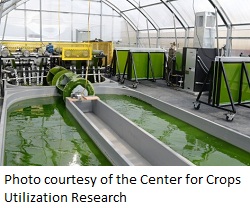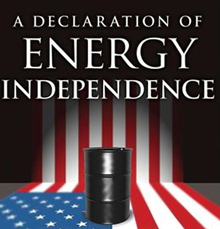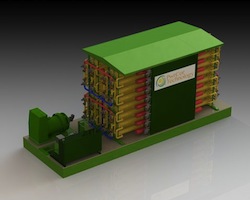 POET has hired Rob Walther as Director of Federal Affairs, tasked with opening a POET office in Washington, D.C. Walther will represent POET and highlight the value of domestic, renewable biofuel in talks with members of Congress, their staffs and federal agencies regulating renewable fuels.
POET has hired Rob Walther as Director of Federal Affairs, tasked with opening a POET office in Washington, D.C. Walther will represent POET and highlight the value of domestic, renewable biofuel in talks with members of Congress, their staffs and federal agencies regulating renewable fuels.- Law firm Morrison & Foerster has hired Robert Fleishman, an energy lawyer with a background in FERC enforcement, regulation, corporate affairs and public policy. He will work out of the firm’s Washington office as senior of counsel.
- Honeywell has announced that Chief Executive Magazine named Chairman and CEO Dave Cote “2013 CEO of the Year,” an honor that recognizes an outstanding corporate leader nominated and selected by peers. The award will be featured on the cover of the July issue.
- The Solar Technology Acceleration Center (SolarTAC) is offering incubator and showcase memberships to allow start-ups to initialize products on a smaller scale. Packages are based on the product’s entrry into the U.S. marketplace.
- Atonometrics, Inc., a company providing test and measurement solutions to the solar photovoltaic industry, has delivered a Continuous Solar Simulator to the National Renewable Energy Laboratory (NREL). The system includes an integrated I-V measurement system and will be used for Light Soak tests of full-size PV modules.
MiEV Evolution II Races to Place
The 91st running of the Pikes Peak International Hill Climb (PPIHC) took place recently and the new MiEV Evolution II race car took second and third in class in the electric vehicle (EV) division. The EV was developed by Mitsubishi Motors North American and was driven by two-time Daka Rally winner Hiroshi Masuoka and six-time PPIHC motorcycle champion Greg Tracy.
The race, held on June 30th, commenced in the morning under a calm, clear blue sky; however these ideal weather conditions took a turn for the worse and a downpour of rain hit the track just before the pair of MiEV Evolution II race cars began their runs at the time trial event.
 Both Tracy and Masuoka raced in extremely difficult wet conditions, along with limited visibility in the higher sections of the race course, resulting in Masuoka recording a time of 10 minutes, 21.866 seconds, with Tracy following closely behind at 10 minutes, 23.649 seconds. Despite the challenging conditions, the pair broke last year’s second place time in the EV Division of 10 minutes, 30.850, achieved in 2012 by Masuoka piloting the Mitsubishi i-MiEV Evolution on a dry road in optimal conditions.
Both Tracy and Masuoka raced in extremely difficult wet conditions, along with limited visibility in the higher sections of the race course, resulting in Masuoka recording a time of 10 minutes, 21.866 seconds, with Tracy following closely behind at 10 minutes, 23.649 seconds. Despite the challenging conditions, the pair broke last year’s second place time in the EV Division of 10 minutes, 30.850, achieved in 2012 by Masuoka piloting the Mitsubishi i-MiEV Evolution on a dry road in optimal conditions.
Finishing in second-place in the Electric Division for a second year in a row, team captain and driver Masuoka commented on the race, “Just before the start, since the road became completely wet, we had to swap the tires from slicks to grooved. Even with the grooved tires, the pavement was really wet and the car was sliding around quite a bit. It really was treacherous conditions to drive in, but both cars were able to make it to the top safely. Since we were aiming for the win, the result is quite disappointing. While due to this rain, it is easy to blame the result on our luck, we must also realize our weakness and continue to make improvements for the future.”
A completely all-new design from the ground up, the MiEV Evolution II features a unique quad-motor (two front/two rear) drivetrain, next-generation lithium-ion batteries by Lithium Energy Japan (LEJ), an optimized all-electric version of Mitsubishi’s exceptionally capable Super All-Wheel Control (S-AWC) all-wheel drive system and wind tunnel-derived, aerodynamically-enhanced carbon-fiber bodywork.
Algae.Tec’s Coal-Fueled Algae-to-Biodiesel Plant
 Algae.Tec inked a deal with Australia’s largest power company that will feed the waste carbon dioxide from a 2640MW coal-fired power station near Sydney to algae to eventually turn into biodiesel. Owned by the New South Wales government, the Macquarie Generation Bayswater coal-fired power station, one of the largest in the world, will use an enclosed algae growth system.
Algae.Tec inked a deal with Australia’s largest power company that will feed the waste carbon dioxide from a 2640MW coal-fired power station near Sydney to algae to eventually turn into biodiesel. Owned by the New South Wales government, the Macquarie Generation Bayswater coal-fired power station, one of the largest in the world, will use an enclosed algae growth system.
“This deal is an innovative means of capturing and reusing carbon emissions and providing the Hunter region with a locally produced green fuel source,” [NSW Energy Minister Chris] Hartcher said.
Macquarie Generation CEO and Managing Director Russell Skelton said:
“Our agreement with Algae.Tec is another example of MacGen finding creative ways to improve our business and improve our environmental performance.”
“Its new technology is improving a traditional power plant.”
“At a time when all the petroleum refining capacity is closing down in NSW, this is the beginning of an era of renewable fuel which can be “grown” in the State and can substitute imported petroleum products,” said [Algae.Tec Executive Chairman Roger] Stroud.
In addition to taking the CO2 out of the environment and creating green fuel, Algae.Tec officials point out the deal creates hundreds of jobs in that area.
Iowa State Growing Algae for Biofuel, Other Uses
 Researchers at Iowa State have a new facility to grow algae for a variety of uses, including biofuel production. This news release from the school says the facility’s innovative design is attracting a lot of interest from other universities and private industry.
Researchers at Iowa State have a new facility to grow algae for a variety of uses, including biofuel production. This news release from the school says the facility’s innovative design is attracting a lot of interest from other universities and private industry.
The facility contains a novel biofilm-based cultivation system designed by Martin Gross, a graduate assistant in agricultural and biosystems engineering, and Zhiyou Wen, an associate professor of food science and human nutrition.
The cultivation system allows for easy separation of algae from water, which is usually an expensive and often time-consuming process requiring the use of a centrifuge or other costly equipment. The new cultivation system at Iowa State sidesteps that process by passing through the nutrient-rich water a cotton-based biofilm, which collects the algae. After that, the algae are simply scraped off the cotton material. It’s a simpler, more efficient way to cultivate algae, Wen said.
The school compares the technologies at the facility to a lazy river, with a shallow channel of water and a gentle current to keep the water moving, as well as 200-liter flat panel bioreactors.
Ethanol Report on Independence and the RFS
 As we celebrate our nation’s independence this week, we’re coming up on about five years now since the RFS was strengthened in the Energy Independence and Security Act of 2007. So we thought it was good time to look back and see just what that policy has done to help with that goal which has really been at the root of the development of the ethanol industry over the years.
As we celebrate our nation’s independence this week, we’re coming up on about five years now since the RFS was strengthened in the Energy Independence and Security Act of 2007. So we thought it was good time to look back and see just what that policy has done to help with that goal which has really been at the root of the development of the ethanol industry over the years.
On this date back in 2009, we quoted Jay Hakes, author of “A Declaration of Energy Independence,” and his definition of energy independence from that book – it is a great one.
Energy Independence is a civilization changing idea, like freedom, one that should be thought of much like we think of our national independence—our liberty, which is both an ideal and a physical reality. Energy Independence can and should be pursued with the same patriotic spirit that fought for, won and sustains American democracy and freedom.
 In this edition of “The Ethanol Report,” Renewable Fuels Association Vice President of Research and Analysis Geoff Cooper talks about how the RFS is working toward that patriotic goal, helping to reduce imports of foreign oil, grow the economy with American jobs and keep the red, white and blue flying over a greener nation.
In this edition of “The Ethanol Report,” Renewable Fuels Association Vice President of Research and Analysis Geoff Cooper talks about how the RFS is working toward that patriotic goal, helping to reduce imports of foreign oil, grow the economy with American jobs and keep the red, white and blue flying over a greener nation.
Listen to or download the Ethanol Report here: Ethanol Report on Energy Independence and the RFS
Subscribe to “The Ethanol Report” with this link.
CSE to Build Geothermal Energy Plant
Cornerstone Sustainable Energy (CSE) has entered into an agreement with Warner Mountain Energy Corporation to begin the first phase of development of a geothermal energy plant to be located in the Surprise Valley Hot Springs, in Cedarville, California. This phase of development will include a feasibility analysis, conceptual design and budgeting  to install CSE’s PwrCor engine that will generate electrical power. Once complete, this will be the first installation using PwrCor engine to generated power by using heat fro a geothermal source.
to install CSE’s PwrCor engine that will generate electrical power. Once complete, this will be the first installation using PwrCor engine to generated power by using heat fro a geothermal source.
Warner Mountain Energy has approximately 1000 acres for use at the Surprise Valley Hot Springs. The site has several artesian hot springs free flowing to the surface, delivering an aggregate of approximately 850 gallons per minute at 205 degrees Fahrenheit. CSE will tap the hot spring water to supply heat to its PwrCor engine that is expected to produce 250 kilowatts of electric power with 150 gallons per minute of water at 180 degrees F. At this level of output, the Surprise Valley Hot Springs site represents a potential estimated at 1.5 megawatts of constant, uninterrupted electric power.
CSE says that once online, the PwrCor engine operates at input temperatures and flows that are considerably less than those required by competing technologies. The company notes that the ability to operate at these lower temperature and flows enables geothermal developers to exploit resources that were previously unusable for the commercial production of electricity.
Reactions to EPA Vehicle Emissions Proprosed Rule
The Environmental Protection Agency (EPA) has asked for comments regarding its ![]() proposed rule on Tier 3 Motor Vehicle Emission and Fuel Standards and the industry responded in force. Bob Dinneen, president and CEO of the Renewable Fuels Association (RFA) noted that for the most part, the air toxics the EPA is reviewing pertain to refiners of gasoline and auto manufacturers, although there are a few areas of concern for ethanol producers.
proposed rule on Tier 3 Motor Vehicle Emission and Fuel Standards and the industry responded in force. Bob Dinneen, president and CEO of the Renewable Fuels Association (RFA) noted that for the most part, the air toxics the EPA is reviewing pertain to refiners of gasoline and auto manufacturers, although there are a few areas of concern for ethanol producers.
 The National Corn Growers Association’s (NCGA) comments were based upon two main principles: first, the RFS volumes of biofuels in the future should be met in order to preserve the 150 million metric tons of annual CO2 equivalent emission reductions attributed to the RFS 2 program by EPA; and second that ethanol blends above E10 should be splash-blended to increase octane above the level of 87 AKI. Doing this would support EPA’s approach toward establishing E15 as the new certification fuel for 2017 and later non-flexible fueled light duty vehicles.
The National Corn Growers Association’s (NCGA) comments were based upon two main principles: first, the RFS volumes of biofuels in the future should be met in order to preserve the 150 million metric tons of annual CO2 equivalent emission reductions attributed to the RFS 2 program by EPA; and second that ethanol blends above E10 should be splash-blended to increase octane above the level of 87 AKI. Doing this would support EPA’s approach toward establishing E15 as the new certification fuel for 2017 and later non-flexible fueled light duty vehicles.
Along these same lines, the RFA supports treating E16-E50 blends as alternative fuels.
“EPA clearly recognizes that the most effective and efficient way to achieve the important goals of the proposed rule is to work to harmonize it with other policies affecting and regulating the transportation fuel sector throughout the country, including the RFS, Corporate Average Fuel Economy Standards (CAFE), and California’s Low Emission  Vehicle Program,” writes Brent Erickson, executive vice president of BIO’s Industrial & Environmental Section in formal comments. “BIO supports the proposed rule and believes that the final Tier 3 rule has the potential to encourage the continued development and commercialization of all biofuels.”
Vehicle Program,” writes Brent Erickson, executive vice president of BIO’s Industrial & Environmental Section in formal comments. “BIO supports the proposed rule and believes that the final Tier 3 rule has the potential to encourage the continued development and commercialization of all biofuels.”
Erickson, like other biofuel groups noted that the EPA should work to set the emissions of test fuel in a way that will maximize investment and adoption of all biofuels, including higher ethanol blends and drop-in fuels, while also maximizing the level of octane in the fuel supply.
DOE Announces Biofuels Funding
The U.S. Department of Energy has announced funding for four research and development projects to bring next generation biofuels on line faster and drive down the cost of producing gasoline, diesel and jet fuels from biomass. The announcement comes less than a week after President Obama’s commitment to the climate and efforts to cut carbon pollution. In total, the projects in Oklahoma, Tennessee, Utah and Wisconsin will receive $13 million in funding.
 “By partnering with private industry, universities and our national labs, we can increase America’s energy security, bolster rural economic development and cut harmful carbon pollution from our cars, trucks and planes,” said Energy Secretary Ernest Moniz. “As the President made clear in his plan to cut carbon pollution, partnerships like these will help move our economy towards cleaner, more efficient forms of energy that lower our reliance on foreign oil.”
“By partnering with private industry, universities and our national labs, we can increase America’s energy security, bolster rural economic development and cut harmful carbon pollution from our cars, trucks and planes,” said Energy Secretary Ernest Moniz. “As the President made clear in his plan to cut carbon pollution, partnerships like these will help move our economy towards cleaner, more efficient forms of energy that lower our reliance on foreign oil.”
In the United States, the transportation sector accounts for two-thirds of total U.S. oil consumption and one-third of our nation’s total greenhouse gas emissions. Hydrocarbon-based biofuels made from non-food feedstocks, waste materials and algae can directly replace gasoline and other fuels in our gas tanks and refineries. The Energy Department continues to take steps to speed the development of clean, renewable biofuels, with the goal of producing cost-competitive drop-in biofuels at $3 per gallon by 2017.
The research projects announced today build on the Obama Administration’s broader efforts to accelerate the next generation of biofuels by bringing down costs, improving performance and identifying effective, non-food feedstocks and conversion technologies. These projects will help maximize the amount of renewable carbon and hydrogen that can be converted to fuels from biomass and improve the separation processes in bio-oil production to remove non-fuel components – further lowering production costs.
The projects selected for negotiation include:
- Ceramatec – up to $3.3 million, based in Salt Lake City, Utah
- Oak Ridge National Laboratory – up to $2.1 million, based in Oak Ridge, Tennessee
- University of Oklahoma, up to $4 million, based in Norman, Oklahoma
- Virent, Inc. – up to $4 million, based in Madison, Wisconsin
WI Farm Technology Days to Run on Soy Biodiesel
 For the first time in the nearly 60-year history of the Wisconsin Farm Technology Days, all the diesel equipment at the three-day event will run on biodiesel made from soybeans. The Wisconsin Soybean Marketing Board (WSMB) will sponsor the soy biodiesel at the event July 9-11, 2013:
For the first time in the nearly 60-year history of the Wisconsin Farm Technology Days, all the diesel equipment at the three-day event will run on biodiesel made from soybeans. The Wisconsin Soybean Marketing Board (WSMB) will sponsor the soy biodiesel at the event July 9-11, 2013:
“We are thrilled to showcase the benefits of soy biodiesel at the 2013 Wisconsin Farm Technology Days,” says Andy Bensend, a soybean farmer from Dallas, Wis., and a District 1 WSMB director.
All trams, tractors and diesel-powered engines at the show will operate on B20, a fuel consisting of 20% soy biodiesel made from soybeans. This clean burning fuel benefits the environment and consumers, and has a positive impact on Wisconsin soybean farmers. During the show, attendees can test drive a variety of tractors and forage harvesting equipment powered by biodiesel.
“Our show offers a great opportunity to showcase advancements in agriculture,” say Tim Jorgenson, Barron County Agriculture Agent and Wisconsin Farm Technology Days 2013 Executive Secretary.
Local biodiesel brewer Sun Power Biodiesel will supply the green fuel for the event, expected to attract more than 60,000 attendees.
July 1st – Independence Day for Iowa Fuel Retailers
July 1, 2013 has now become “Independence Day” for Iowa fuel retailers as today marks the enactment of a new Iowa law that frees Iowa retailers from some Big Oil restrictions.
“Today, new liberties go into effect for Iowa’s fuel retailers. They now have the freedom to offer the fuel options they choose, not what Big Oil dictates,” said Iowa Renewable Fuel Association (IRFA) Executive Director Monte Shaw. “These new protections amount to a ‘Retailer Bill of Rights,’ providing relief from Big Oil’s heavy handed, branded contracts that  often dictate if and how retailers offer certain fuels, like E15 and E85.”
often dictate if and how retailers offer certain fuels, like E15 and E85.”
H.F. 640, which takes effect today, includes language that prevents oil refiners’ supply agreements from directly or indirectly limiting the ability of local retailers to offer the ethanol and biodiesel blends they choose. The provisions are based on a law enacted in South Dakota in 2011 and addresses specific, anti-competition provisions from refiner supply agreements.
As a result, new supply agreements will not be allowed to:
- Restrict installing a blender pump;
- Restrict using current equipment from offering higher blends, like E15, E85, and B20;
- Restrict ethanol or biodiesel blends from being advertised;
- Restrict the locations where a retailer may offer the higher blends (like under a canopy); and
- Restrict payment for higher blends to cash only (no credit cards).
“While protecting Big Oil trademarks, this piece of legislation not only gives Iowa retailers more freedom to offer the ethanol and biodiesel blends they choose, it also allows Iowa’s consumers greater access to low-cost, homegrown, renewable fuel options,” added Shaw. “More ethanol and biodiesel blends at the pump equates to greater fueling freedom, American jobs and American energy security—all great things to celebrate on Independence Day.”

